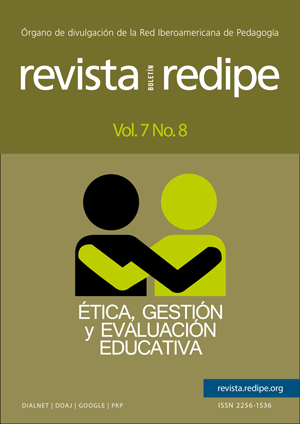Mediation of ICT in the statistics and mathematics course of the Lumen Gentium Catholic University Foundation - UNICATÓLICA. significant experience
Main Article Content
Keywords
ICT tools, mathematics, statistics, teaching-learning, teachers
Abstract
This project describes a significant experience mediated by Information and Communication Technologies, in the course of Statistics and Mathematics at the Lumen Gentium Catholic University Foundation - Unicatólica. Its importance lies in the integration of ICT tools, within the methodology and teaching strategies used in classrooms, to strengthen the teaching and learning process of students in the area of mathematics and statistics.
This experience in practice, allowed to verify the appropriate use of the ICT tools that the teacher made, its evolution in the implementation, investing the necessary time, its effort exploring the utilities and reaching the learning objectives established in the course.
To himself, from the different theoretical references it was possible to verify that by selecting the correct ICT tools, which are adapted to the needs of the students, a dynamic participation environment is created, with more creative activities, which helps to strengthen the experiences individual as collective that contribute to the progress of more specific skills, in students. A case study was carried out, with a descriptive methodology, with a qualitative, non-experimental approach.
References
Galvis, A. (2004). Oportunidades educativas de las TIC. Obtenido de: http://www.colombiaaprende.edu.co/html/investigadores/1609/articles-73523_archivo.pdf.
Gallego, A. (1995). ... Y la Escuela se hizo necesaria. Bogotá: Editorial Magisterio.
Garrido, M. F. (4 de octubre de 2003). Dialnet. Obtenido de Dialnet: https://dialnet.unirioja.es/servlet/tesis?codigo=7795
Hooper, S., Rieber, L. (1995). Teaching with technology. In A. C. Ornstein (Ed.), Teaching: Theory into practice, (p.154-170). Needham heights, MA: Allyn and Bacon.
Laborde C. (2001). Integration of technology in the design of geometry tasks with Cabrygeometry. International Journal of Computers for Mathematical Learning, 6/3, 283-317.
Latorre, M., Seco del Pozo, C. (2013). Metodología, estrategias y técnicas metodológicas. Santiago de Surco, Lima: Universidad Marcelino Champagnat.
Martínez Solana, M. (2004). Redes sociales y TIC, su papel en la educación Superior del siglo XXI. Obtenido de: https://revistas.ucm.es/index.php/HICS/article/viewFile/45108/42477
Ministerio de Educación Nacional de la República de Colombia (2007). Investigación de los Saberes Pedagógicos. Obtenido de: https://www.mineducacion.gov.co/1621/articles-345504_anexo_13.pdf
Salinas, J. (2008). Innovación educativa y uso de las TIC. Obtenido de: http://dspace.unia.es/bitstream/handle/10334/2524/innovacioneduc2008.pdf?sequence=1
Semenov, A. (2005), en su documento Las tecnologías de la información y la comunicación en la enseñanza – UNESCO. Obtenido de: http://unesdoc.unesco.org/images/0013/001390/139028s.pdf
UNESCO (1999). Los siete saberes necesarios para la educación del futuro. Obtenido de: http://unesdoc.unesco.org/images/0011/001177/117740so.pdf
Wolfgang, P., Astudillo, G. (2008). Software libre para Matemática: En búsqueda de Alternativas. Obtenido de: http://repem.exactas.unlpam.edu.ar/cdrepem08/memorias/comunicaciones/Trabinvest/C17.pdf


